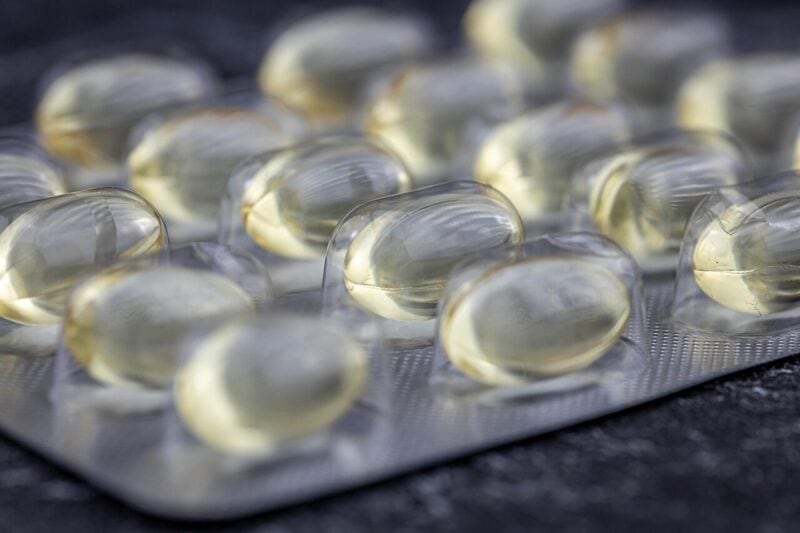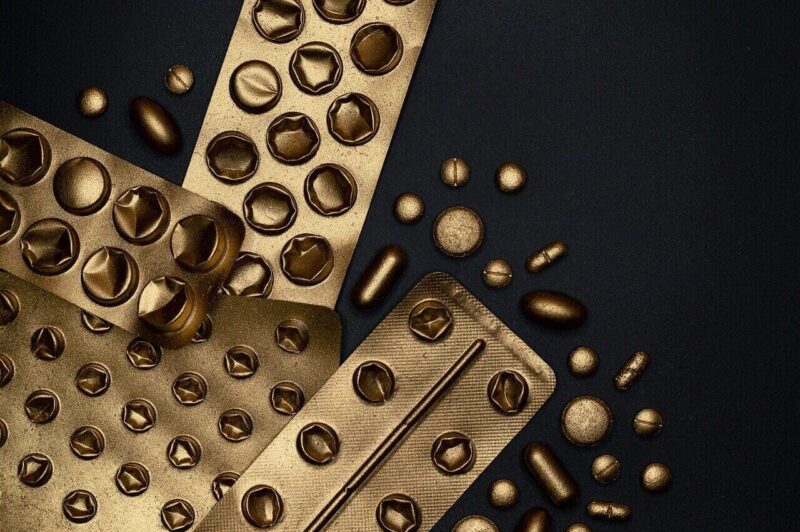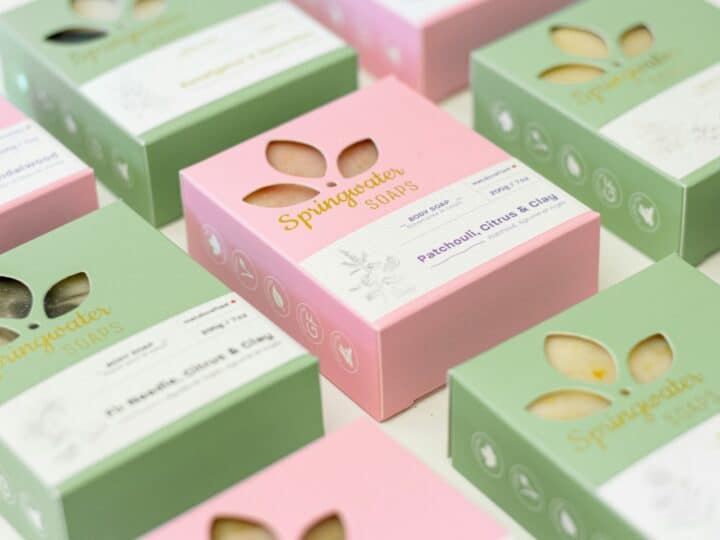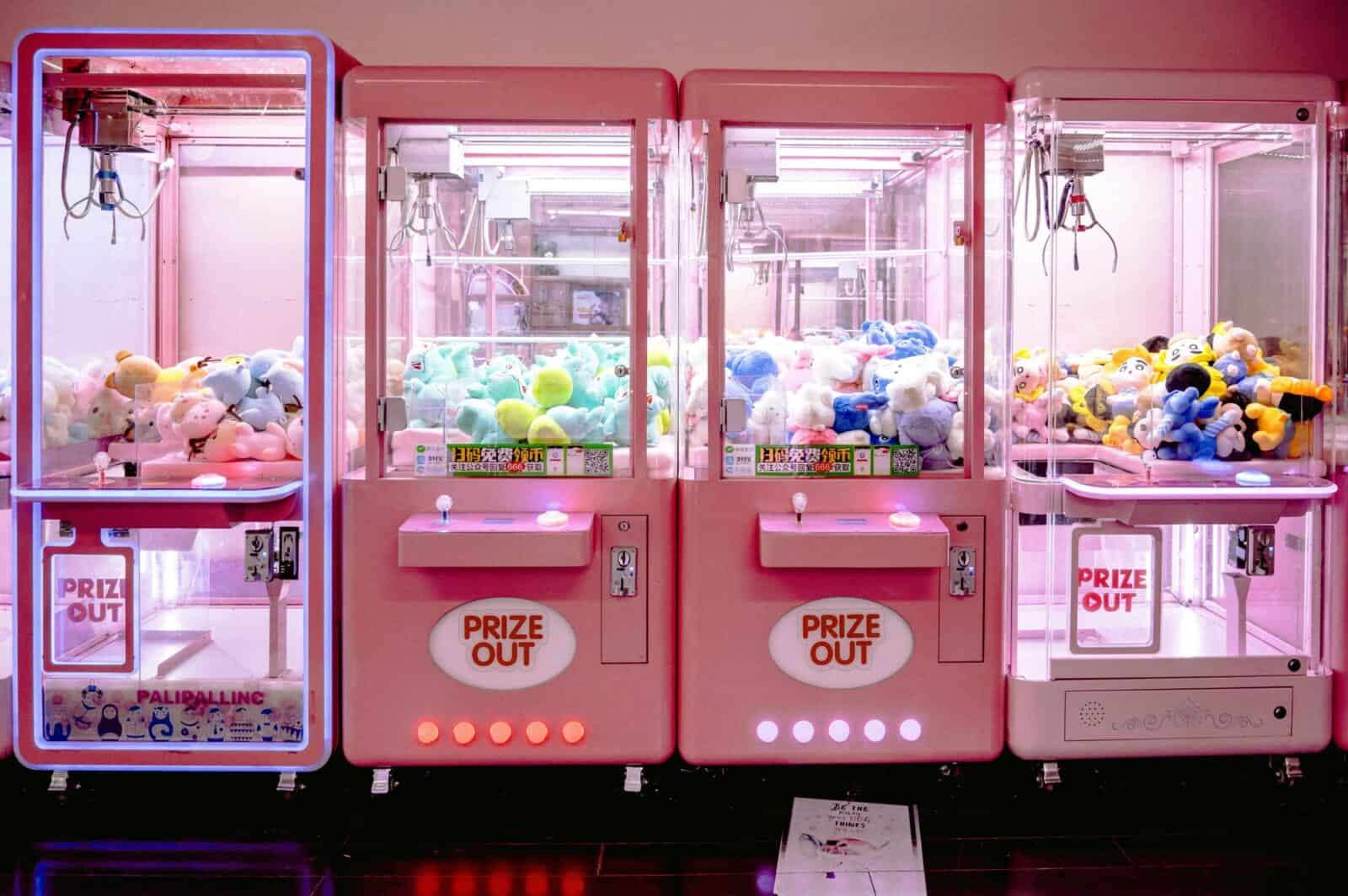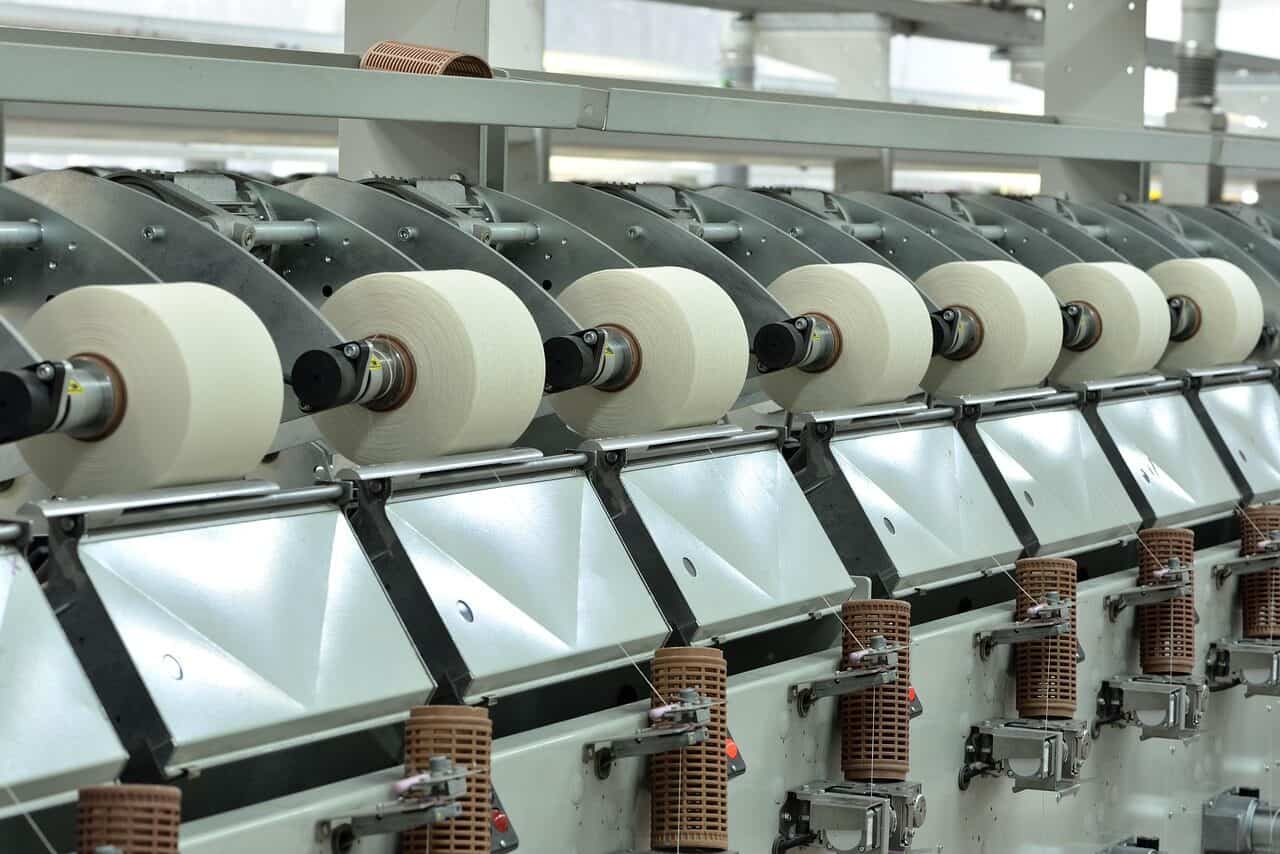Por que a embalagem blister é usada? Um guia completo para seus benefícios e usos
Você já se perguntou por que suas vitaminas diárias, um novo conjunto de pilhas ou o brinquedo favorito de seu filho quase sempre vêm em uma embalagem específica de plástico e papelão? Esse formato comum, chamado de embalagem blister, não é um acidente. É uma escolha cuidadosa e bem projetada feita por milhares de marcas em todo o mundo. O motivo é uma combinação poderosa de segurança do produto, permitindo que os clientes vejam o produto, e uma fabricação eficiente que poucos outros tipos de embalagem podem igualar. Para gerentes de produtos, proprietários de empresas e engenheiros, entender o "porquê" por trás dessa escolha é essencial para tomar decisões inteligentes sobre embalagens. Este guia completo explicará exatamente por que a embalagem blister é tão importante em muitos setores, de medicamentos a eletrônicos, e como usar suas vantagens em seus próprios produtos.
O que é embalagem blister?
Antes de analisarmos seus benefícios, precisamos definir claramente o que é uma embalagem. Isso nos ajuda a entender as partes e os termos que definem esse tipo de embalagem.
A definição básica
Em sua forma mais simples, a embalagem blister é um tipo de embalagem plástica pré-formada. A maneira mais fácil de pensar nela é como uma "bolha" ou "blister" de plástico que contém um produto. Essa cavidade plástica moldada é feita aquecendo-se uma folha de plástico e moldando-a em um formato específico, geralmente um molde perfeito ao redor do item que será acondicionado. Essa cavidade plástica é então selada em um material de apoio, chamado de material de cobertura. Essa combinação cria um recipiente seguro e individual para o produto em seu interior.
"Blister Pack" vs. "Blister Bag" (embalagem blister)
Embora "embalagem blister" seja o termo padrão do setor, frequentemente vemos os consumidores usarem a expressão "saco blister". Esse termo geralmente significa a mesma coisa: um blister de plástico selado em um suporte. É um termo informal que mostra a função da embalagem de segurar ou "ensacar" um item. Às vezes, saco de blister também pode descrever recipientes ou bolsas menores e mais flexíveis, totalmente de plástico, que se parecem com blisters. Para fins profissionais, usaremos o termo "blister pack", mas entendemos que o público em geral geralmente usa blister bag.
As partes principais
Toda embalagem blister, independentemente de seu uso específico, tem duas partes principais. Entendê-las é fundamental para compreender como a embalagem funciona.
- O blister ou cavidade: Essa é a parte plástica formada que contém diretamente o produto. É transparente para permitir a visibilidade e é moldada para manter o produto imóvel, evitando o movimento e possíveis danos durante o transporte e o manuseio.
- A tampa: É o suporte que sela o produto dentro da cavidade plástica. O material da tampa pode variar muito, dependendo do uso, desde papel-cartão para bens de consumo até folha de alumínio para medicamentos. Ele serve como lacre e também é a superfície principal para a impressão de gráficos, instruções e informações necessárias.
10 principais benefícios da embalagem
O uso generalizado da embalagem blister decorre diretamente de sua longa lista de benefícios. Essas vantagens atendem a necessidades importantes, desde a proteção e a segurança do produto até o marketing e a conveniência do usuário. Aqui estão os dez principais motivos pelos quais ela é uma escolha tão popular.
- Proteção superior do produto: A cavidade rígida e personalizada cria uma fortaleza ao redor do produto. Esse design protege os itens contra impacto, vibração e compressão durante o transporte e nas prateleiras das lojas. Além disso, os materiais podem ser escolhidos para criar uma forte barreira contra umidade, oxigênio, luz e outros contaminantes ambientais, o que é fundamental para manter os produtos sensíveis estáveis e eficazes.
- Evidência de violação e segurança: Para medicamentos, dispositivos médicos e até mesmo bens de consumo de alto valor, a segurança é essencial. Uma embalagem blister oferece evidência de violação incorporada. O lacre, seja uma tampa de alumínio ou um suporte de papelão, deve ser rasgado ou rompido para acessar o produto. Isso fornece um sinal visual claro e imediato de que a embalagem foi violada, dando aos consumidores confiança na segurança do produto.
- Visibilidade aprimorada do produto: Em um ambiente de varejo lotado, ver é acreditar. O plástico transparente de uma embalagem blister permite que os consumidores vejam o produto real antes de comprar. Essa transparência gera confiança, confirma a qualidade e os recursos do produto e pode aumentar significativamente as vendas. Ela elimina a adivinhação, permitindo que o produto se venda sozinho.
- Controle de dose unitária e porção: Esse é, sem dúvida, o recurso mais importante para o setor de medicamentos. Cada comprimido ou cápsula é mantido em sua própria cavidade separada. Esse formato de dose unitária ajuda os pacientes e cuidadores a monitorar a ingestão de medicamentos, reduzindo o risco de super ou subdosagem acidental. Com a não adesão à medicação para doenças crônicas em torno de 50%, de acordo com a Organização Mundial da Saúde, as embalagens que simplificam os horários de dosagem desempenham um papel fundamental na melhoria dos resultados dos pacientes.
- Espaço para marcas e informações: O material da tampa, especialmente o papel-cartão, funciona como um mini-quadro de avisos. Essa superfície oferece muito espaço para uma marca de alto impacto, gráficos brilhantes, instruções detalhadas de uso, informações nutricionais, códigos de barras e qualquer texto regulatório necessário. A embalagem se torna uma parte importante da estratégia de marketing e comunicação.
- Prevenção de contaminação cruzada: Em embalagens múltiplas que contêm itens diferentes ou até mesmo medicamentos de dosagem diferente, cada unidade é lacrada individualmente. Essa separação evita qualquer interação, quebra ou contaminação cruzada entre os itens da mesma embalagem, garantindo que cada unidade permaneça perfeita até ser aberta.
- Leve e econômica: Em comparação com alternativas mais pesadas e rígidas, como potes de vidro, latas de metal ou caixas plásticas moldadas, a embalagem blister é extremamente leve. Isso se traduz diretamente em custos mais baixos de transporte e combustível em toda a cadeia de suprimentos. Os materiais em si também são geralmente baratos, e a natureza automatizada e de alta velocidade das linhas de embalagem blister faz com que seja uma solução altamente econômica para a produção em massa.
- Flexibilidade e personalização do projeto: O processo de moldagem é incrivelmente flexível. A cavidade plástica pode ser moldada em praticamente qualquer formato ou tamanho, proporcionando um ajuste confortável e seguro para produtos que vão desde um pequeno parafuso até um dispositivo médico complexo. Essa personalização não só aumenta a proteção, mas também contribui para uma aparência premium.
- Facilidade de distribuição para o consumidor: As embalagens blister podem ser projetadas para experiências específicas do consumidor. A tampa de alumínio para comprimidos oferece acesso rápido, enquanto a tampa de papel ou filme destacável pode ser usada para produtos mais delicados ou para dispositivos médicos em que é necessária uma apresentação estéril. Recursos como perfurações entre os blisters permitem a fácil separação das doses.
- Vida útil prolongada: Ao combinar o filme formador e o material de cobertura corretos, uma embalagem blister pode criar uma barreira quase impermeável aos fatores ambientais. Esse microambiente controlado dentro de cada cavidade do blister retarda significativamente a decomposição, preservando o frescor, a potência e a eficácia do produto e levando a uma vida útil mais longa e estável.
Usos comuns no setor
A flexibilidade da embalagem blister significa que você pode encontrá-la em quase todos os corredores de uma loja e em importantes ambientes profissionais. Seus usos abrangem uma gama diversificada de setores, cada um usando seus benefícios exclusivos.
Medicina e assistência médica
Esse é o uso mais conhecido. Os recursos de segurança, proteção e dosagem são os mais importantes.
- Comprimidos e cápsulas de medicamentos prescritos
- Medicamentos de venda livre (OTC), como analgésicos e antialérgicos
- Dispositivos médicos, como seringas, cateteres e suturas cirúrgicas
- Kits de teste de diagnóstico, incluindo tiras de teste de glicose no sangue
Bens de consumo e eletrônicos
Para itens pequenos, de alto valor ou facilmente perdidos, as embalagens blister oferecem visibilidade e segurança contra roubo.
- Pilhas de todos os tamanhos (AA, AAA, 9V)
- Unidades USB, cartões SD e outros dispositivos de memória pequenos
- Fones de ouvido, cabos de carregamento e pequenos acessórios eletrônicos
- Cartuchos de tinta para impressoras
Hardware
As embalagens blister são ideais para organizar e vender pequenos componentes de hardware, evitando perdas e permitindo uma rotulagem clara.
- Parafusos, porcas, parafusos e arruelas vendidos em quantidades específicas
- Brocas e outros acessórios de ferramentas elétricas
- Pequenas ferramentas manuais, como conjuntos de chaves Allen
Brinquedos e artesanato
A combinação de visibilidade e contenção é perfeita para pequenos brinquedos e suprimentos de hobby.
- Pequenas figuras de ação e itens colecionáveis
- Materiais de artesanato, como miçangas, purpurina e olhos de mentira
- Componentes do kit de modelagem
Alimentos e doces
Para itens alimentares de porção única, as embalagens blister oferecem higiene e conveniência.
- Goma de mascar e balas de hortelã
- Doces ou chocolates pequenos, com porções controladas
Um olhar mais profundo sobre os materiais
A escolha dos materiais corretos é uma decisão crítica de engenharia que determina o desempenho e o custo da embalagem final. Os dois principais componentes, o filme formador e o material de cobertura, têm uma variedade de opções.
O filme formador (o "blister")
Esse é o plástico transparente que é moldado na cavidade do produto. A escolha do plástico depende inteiramente do nível de proteção que o produto exige.
| Material | Principais propriedades | Usos comuns |
| PVC (cloreto de polivinila) | Baixo custo, excelente transparência, boa rigidez. Forma-se facilmente. Oferece uma barreira moderada à umidade. | O carro-chefe das embalagens blister. Usada para produtos secos, medicamentos OTC, hardware e produtos de consumo em geral. |
| PET (politereftalato de etileno) | Excelente transparência e resistência. Boa barreira ao oxigênio. Frequentemente visto como uma opção mais reciclável. | Bens de consumo, produtos alimentícios e, cada vez mais, como uma alternativa mais sustentável ao PVC. |
| PVDC (cloreto de polivinilideno) | Geralmente usado como revestimento em PVC ou PET. Oferece uma barreira excepcional à umidade e ao oxigênio. | Medicamentos com prescrição médica e dispositivos médicos sensíveis que exigem um nível muito alto de proteção contra a atmosfera. |
| Aclar® (PCTFE) | O filme moldável de mais alto desempenho. Oferece a melhor barreira contra umidade disponível, é quimicamente inerte e tem excelente transparência. | Medicamentos altamente sensíveis e tolerantes à umidade (por exemplo, comprimidos para dissolução oral) e dispositivos médicos de alto valor. |
O material da tampa (o "selo")
Esse é o suporte que é selado a quente no filme formador. Sua principal função é completar a barreira protetora e fornecer um método de acesso.
- Folha de alumínio de passagem: Normalmente, é uma folha de alumínio de têmpera dura com um revestimento de vedação térmica. Foi projetado para ser quebrável, o que significa que se quebra facilmente quando o produto é empurrado através dele. Fornece uma barreira perfeita contra luz, umidade e gases. Esse é o padrão para comprimidos e cápsulas de medicamentos.
- Tampa destacável: Pode ser feita de papel, papel alumínio ou laminados plásticos. É projetada para ser removida do blister de plástico sem rasgar. Isso é essencial para dispositivos médicos que precisam ser apresentados em um campo estéril ou para produtos que são muito frágeis para serem empurrados através do papel alumínio.
- Papel-cartão: Um material rígido à base de papel, geralmente revestido para obter uma melhor superfície de vedação e qualidade de impressão. Proporciona integridade estrutural e uma grande área de impressão, mas oferece proteção mínima contra barreiras. É a escolha mais comum para bens de consumo em geral.
- Plástico com plástico: em um design clamshell, que é um tipo de embalagem blister, duas metades de plástico são seladas juntas. Isso cria uma embalagem totalmente transparente que é muito segura, embora muitas vezes difícil de ser aberta pelos consumidores.
Escolhendo a embalagem blister correta
Fazer a escolha correta da embalagem requer uma abordagem sistemática que equilibre as necessidades do produto, a experiência do consumidor e as metas comerciais. Como especialistas em embalagens, orientamos os clientes por meio de uma estrutura de tomada de decisões para garantir que todos os ângulos sejam cobertos.
Etapa 1: Analisar as necessidades do produto
O produto em si é o ponto de partida. Você deve fazer uma série de perguntas críticas para definir os requisitos técnicos do pacote.
- Qual é o nível de proteção necessário? O produto precisa de uma barreira contra umidade, oxigênio, luz UV ou todos os três? Isso determinará suas escolhas de material.
- O produto é frágil ou pesado? A espessura e a rigidez do plástico devem ser suficientes para protegê-lo contra danos físicos.
- A evidência de violação é um requisito regulamentar (como no caso de medicamentos) ou um valor agregado para evitar o roubo no varejo? Isso influencia o design do lacre.
- O produto tem prazo de validade longo ou curto? As propriedades de barreira necessárias estão diretamente ligadas à estabilidade desejada do produto ao longo do tempo.
Etapa 2: Considere a experiência do cliente
De acordo com nossa experiência, ignorar o usuário final é um erro comum e caro. Uma embalagem difícil ou frustrante de abrir, um fenômeno geralmente chamado de "fúria do embrulho", pode prejudicar significativamente a percepção da marca e impedir a repetição de compras. É preciso considerar quem está abrindo a embalagem e em que contexto. No caso de um medicamento destinado a um paciente idoso com artrite, uma embalagem difícil de abrir ou de empurrar pode ser uma grande barreira à adesão. Nesses casos, recomendamos recursos como etiquetas maiores, bordas perfuradas para facilitar o rasgo ou mecanismos de abertura especialmente projetados para idosos. A experiência de desembalagem é a primeira interação física que um cliente tem com a sua marca; torne-a positiva.
Etapa 3: Avaliar as metas de negócios
Por fim, você deve alinhar a embalagem ao seu orçamento, ao volume de produção e às metas mais amplas da empresa, como a sustentabilidade. Há compensações a serem consideradas. Os filmes de alta barreira, como o Aclar®, oferecem proteção suprema, mas têm um custo superior ao do PVC. Embora materiais sustentáveis como o rPET (PET reciclado) ou plásticos de base biológica possam melhorar as credenciais ambientais de sua marca, eles podem ser mais caros e exigir ajustes em seu maquinário. Os custos de ferramental para criar o molde específico para sua embalagem blister também devem ser considerados no orçamento geral do projeto, especialmente para tiragens de menor volume.
| Principais considerações | Embalagem padrão de PVC/Foil | Embalagem Aclar® de alta barreira | Concha totalmente em plástico | Armadilha de papelão Blister |
| Tipo de produto | Pílulas gerais, hardware | Medicamentos altamente sensíveis | Eletrônicos, acessórios | Unidades USB, cosméticos |
| Proteção necessária | Barreira moderada contra umidade | Barreira definitiva contra umidade/gás | Alta proteção física | Baixa barreira, bom aspecto físico |
| Acessibilidade do usuário | Fácil passagem | Fácil passagem | Frequentemente difícil de abrir | Fácil de abrir |
| Orçamento | Baixo custo | Alto custo | Custo moderado | Custo baixo a moderado |
| Sustentabilidade | Baixo (multimaterial) | Baixo (multimaterial) | Moderado (mono-material) | Moderado (mistura de papel/plástico) |
O futuro da 
Embora os princípios básicos da embalagem blister permaneçam, o setor está passando por mudanças significativas impulsionadas pelas demandas por maior sustentabilidade, funcionalidade e facilidade de uso.
A busca pela sustentabilidade
O impacto ambiental das embalagens plásticas é um dos principais focos. O setor está respondendo com inovação. Nos últimos anos, os resíduos de embalagens e contêineres representaram uma parcela significativa dos resíduos sólidos municipais, com números nos EUA que ultrapassam 80 milhões de toneladas por ano. Para combater isso, há um forte impulso para que as estruturas tradicionais multicamadas e não recicláveis (como PVC/papel-alumínio) sejam substituídas por monomateriais. Uma combinação de blister e tampa totalmente em PET, por exemplo, pode ser reciclada mais facilmente nos fluxos existentes. O uso de conteúdo reciclado, especialmente rPET, também está crescendo, assim como a exploração de plásticos de base biológica derivados de recursos renováveis.
A ascensão das embalagens "inteligentes
A próxima fronteira é a integração da tecnologia diretamente na embalagem. Essas embalagens blister "inteligentes" estão prontas para revolucionar setores como o de saúde.
- Ao incorporar chips de comunicação de campo próximo (NFC) ou circuitos eletrônicos impressos na tampa, uma embalagem pode se comunicar com um smartphone.
- Essa tecnologia pode ser usada para monitorar a adesão do paciente, enviando lembretes ou registrando quando uma dose é retirada da embalagem.
- Ele pode fornecer aos pacientes acesso a informações digitais, como instruções em vídeo ou avisos sobre interações medicamentosas.
- Para medicamentos de alto valor, ele serve como uma poderosa ferramenta antifalsificação, permitindo a verificação em qualquer ponto da cadeia de suprimentos.
Inovações em design centrado no paciente
Há um reconhecimento crescente de que as embalagens devem ser projetadas para as pessoas, não apenas para as máquinas. Isso está levando a inovações focadas em melhorar a usabilidade. Estamos vendo mais embalagens blister com calendários integrados e impressão do dia da semana para ajudar os pacientes a seguirem cronogramas de dosagem complexos. Desenhos com ergonomia aprimorada, texto maior para melhor legibilidade e novos recursos de abertura estão sendo desenvolvidos especificamente para ajudar pacientes idosos e aqueles com destreza limitada, abordando diretamente os desafios do gerenciamento de medicamentos.
Perguntas frequentes
Aqui estão respostas rápidas para algumas das perguntas mais comuns que recebemos sobre embalagens blister.
1. A embalagem blister é ruim para o meio ambiente?
Essa é uma questão complexa. Embora as embalagens blister tradicionais feitas de vários materiais, como PVC e alumínio, sejam difíceis de reciclar, o setor está mudando ativamente para soluções mais sustentáveis. Essas soluções incluem designs de um único material (como embalagens totalmente em PET) que são recicláveis, aumentando o uso de conteúdo reciclado (rPET) e desenvolvendo plásticos de base biológica. Além disso, a proteção superior oferecida pela embalagem blister reduz o desperdício de produtos devido a deterioração ou danos, o que, por si só, tem um custo ambiental significativo.
2. Qual é a diferença entre uma embalagem blister e uma clamshell?
Uma clamshell é um tipo específico de embalagem blister. Em uma embalagem blister tradicional, uma cavidade plástica é selada em um suporte plano feito de um material diferente (como papel-cartão ou papel alumínio). Uma clamshell consiste em duas metades de plástico, geralmente conectadas por uma dobradiça, que se dobram para envolver o produto inteiramente em plástico. As clamshells oferecem excelente visibilidade e segurança, mas são frequentemente criticadas por serem difíceis de abrir.
3. Por que o papel-alumínio é usado na parte de trás das embalagens de comprimidos?
A folha de alumínio é o material preferido para embalagens de medicamentos push-through por vários motivos importantes. Ele oferece uma barreira perfeita e absoluta contra umidade, gases e luz, protegendo a estabilidade do medicamento. Também é "quebrável", o que significa que é rígido o suficiente para proteger o produto, mas quebradiço o suficiente para se romper completamente quando um comprimido é empurrado. Por fim, sua opacidade protege os medicamentos sensíveis à luz.
| Vantagens (Prós) | Desvantagens (contras) |
| Excelente proteção do produto | Preocupações ambientais com multimateriais |
| Alta visibilidade do produto na prateleira | Potencial para "fúria do envoltório" se mal projetado |
| Evidência de violação incorporada | Custos iniciais de ferramental para moldes personalizados |
| Dosagem unitária e controle precisos | Pode ser volumoso para itens pequenos individuais |
| Ampla área para marca e informações | O processo de vedação requer maquinário especializado |
| Leve e econômico |
O valor duradouro de Embalagem Blister
Então, por que a embalagem blister é usada? A resposta definitiva está em sua inigualável combinação de proteção, segurança e flexibilidade. É uma solução de embalagem que, ao mesmo tempo, protege um produto contra danos físicos e ambientais, proporciona aos consumidores a confiança de um selo inviolável e a clareza de uma visão transparente, além de oferecer às marcas uma ferramenta de marketing econômica e personalizável. Desde garantir a dosagem precisa de medicamentos que salvam vidas até exibir um produto de consumo de forma atraente em um gancho de varejo, seus principais benefícios são fundamentais. À medida que o setor continua a evoluir com tecnologias inteligentes e um forte foco na sustentabilidade, as razões básicas para o uso de embalagens blister não mudarão. Eles apenas serão aprimorados, garantindo que ela continue sendo uma solução de embalagem vital e inteligente por muitos anos.

